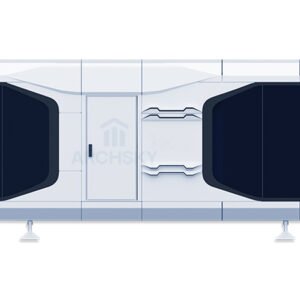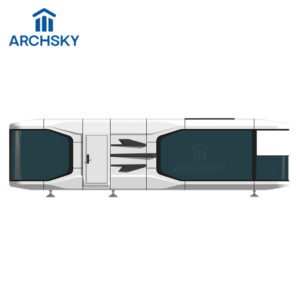Introduction to Prefabricated Homes and Modular Homes
In recent years, the housing market has experienced a significant shift towards more sustainable, efficient, and modern building solutions. Among these, prefabricated homes and modular homes have gained widespread attention for their cost-effectiveness, faster construction timelines, and innovative designs. These homes are reshaping traditional construction methods and offering viable alternatives to conventional housing, especially for homeowners seeking flexibility, affordability, and a smaller environmental footprint.
With growing demand for eco-friendly homes and alternative building materials, aluminum prefab homes have become a standout option. These homes leverage advanced materials like ACP cladding (Aluminum Composite Panels) to create structures that are not only modern in appearance but also highly durable, energy-efficient, and low-maintenance. As the world moves towards greener solutions, aluminum prefab homes offer an exciting choice for those looking to build sustainably without sacrificing aesthetics or functionality.
Understanding the difference between prefab and modular homes is crucial for potential homeowners, especially those exploring cutting-edge housing options. By grasping the unique features and advantages of each, buyers can make an informed decision based on their needs, whether it’s energy efficiency, design flexibility, or long-term durability.

The Rise of Aluminum Prefab Homes
The global trend toward sustainable housing solutions has fueled the growth of aluminum prefab homes, which use cutting-edge materials such as ACP cladding to provide a unique combination of durability and eco-friendliness. Prefabricated homes, by definition, are built in controlled factory environments and then assembled on-site. Unlike traditional homes that are constructed entirely on-site, prefab homes are modular in nature, with pre-built components being delivered to the location.
Aluminum has emerged as a preferred material in the prefab home market due to its lightweight, long-lasting, and corrosion-resistant qualities. ACP cladding, specifically, enhances these properties, offering a sleek, modern look while improving thermal insulation and energy efficiency. These features make aluminum prefab homes not only more durable and aesthetically pleasing but also more energy-efficient, helping homeowners lower their utility bills and reduce their carbon footprint.
As consumers become more conscious of environmental impact, the use of ACP cladding in aluminum prefab homes aligns perfectly with the demand for sustainable building practices. These homes can be designed to meet the highest environmental standards, with better insulation and less reliance on energy-intensive materials, making them an excellent choice for green-conscious buyers.
Why Understanding the Differences Between Prefab and Modular Homes Matters
When it comes to choosing between a prefab home and a modular home, understanding the differences is key to selecting the right fit for your needs. Both types of homes offer significant advantages over traditional stick-built houses, but they come with unique features that cater to specific preferences.
Prefab Homes:
These homes are built off-site in a factory and then transported to the construction site. The major appeal of prefab homes is their speed of construction and cost-effectiveness. They are highly customizable and can be designed with a variety of materials, including aluminum and ACP cladding, to achieve the desired aesthetic and performance standards. For those looking for modern designs, sustainability, and quick construction times, prefab homes offer a superior option.
Modular Homes:
Like prefab homes, modular homes are also built in a factory setting, but they are constructed in individual sections or “modules” that are then assembled on-site. Modular homes typically offer greater customization options in terms of layout and design compared to traditional prefab homes. However, they often use more conventional materials, which may not provide the same level of energy efficiency or durability as aluminum prefab homes equipped with ACP cladding.
For potential homeowners, understanding these distinctions is crucial. While modular homes offer flexibility in layout and design, aluminum prefab homes equipped with ACP cladding provide enhanced durability, modern aesthetics, and better energy performance. This makes aluminum prefab homes a highly attractive choice for those looking for a sustainable, efficient, and stylish housing solution.
What are Prefabricated Homes?
Prefab homes represent a revolutionary approach to homebuilding, offering a faster, more efficient, and often more affordable alternative to traditional construction. These homes are built off-site in a controlled factory environment, with pre-fabricated components assembled on location. The flexibility in design, ease of construction, and sustainability benefits make prefab homes an increasingly popular option for homeowners worldwide.
Prefab homes come in several variations, each offering different levels of customization and construction methods. Understanding these types can help you determine which option best suits your needs.
Types of Prefabricated Homes
Prefab homes are not a one-size-fits-all solution; they come in various types, each with distinct characteristics. The most common types include panelized homes, kit homes, and modular homes.

Panelized Homes:
In this approach, walls, floors, and roof sections are pre-built in a factory and then delivered to the site. These components are assembled on-site into the structure of the house. Panelized homes offer flexibility in design, but they generally require more on-site construction than other prefab options.
Kit Homes:
Kit homes are similar to panelized homes but come with pre-cut materials and instructions for assembly. These homes offer a highly customizable option for DIY builders and tend to be more cost-effective than fully built prefab homes.
Modular Homes:
Modular homes are constructed in factory-built sections (modules) and then transported to the site for assembly. Once the modules are connected, they form a complete home. Modular homes typically offer greater flexibility in layout compared to panelized and kit homes, making them a popular choice for families looking for personalized floor plans.
Materials Used in Prefabricated Homes
One of the key advantages of prefab homes is the variety of materials available for construction, which allows for greater customization in terms of appearance, durability, and performance. While traditional materials like wood and steel are often used in prefab homes, innovative materials such as aluminum are becoming more popular. Aluminum offers a range of benefits that make it an excellent choice for modern prefab homes.

Aluminum:
The use of aluminum in prefab homes, particularly in the form of ACP cladding (Aluminum Composite Panels), is a game-changer. Aluminum is lightweight yet extremely durable, making it a fantastic material for building strong, long-lasting homes. It is resistant to corrosion, weathering, and fire, which contributes to a home’s longevity and performance in harsh environments.
Sustainability and Efficiency:
Aluminum is one of the most sustainable building materials available today. It is 100% recyclable, meaning that aluminum used in prefab homes can be repurposed at the end of its life, reducing the environmental impact. Additionally, ACP cladding enhances the insulation properties of prefab homes, reducing energy consumption and improving the overall energy efficiency of the home.
Aesthetic Appeal:
Aluminum’s sleek and modern look appeals to homeowners who seek contemporary and visually striking designs. The reflective surface of ACP cladding can also help regulate temperatures inside the home by reflecting heat away in the summer and trapping warmth during colder months.
Advantages of Using Aluminum in Prefabricated Homes
The inclusion of aluminum in prefab homes provides multiple advantages, making these homes more durable, efficient, and eco-friendly. The use of ACP cladding in particular brings numerous benefits, which set aluminum prefab homes apart from traditional homes built with other materials.
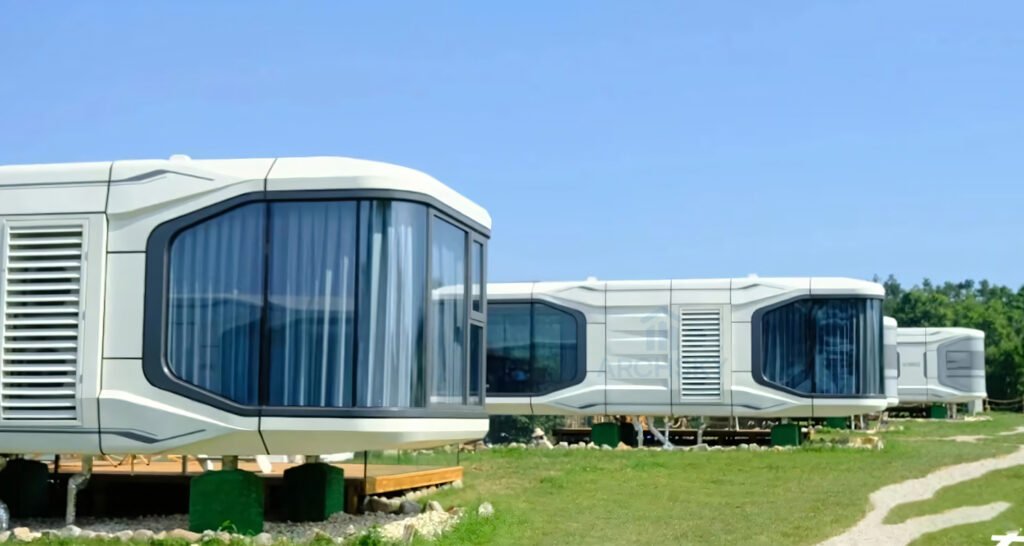
Durability and Longevity
Aluminum is incredibly strong and resistant to the elements. Unlike wood or vinyl siding, it does not warp, crack, or rot, ensuring that the home maintains its structural integrity over time. For homeowners seeking a long-lasting solution, the strength and resilience of aluminum make it an ideal material for prefab homes.
Lightweight Construction
The lightweight nature of aluminum allows for quicker and more efficient construction. With prefab homes using aluminum components, the materials are easier to handle and transport, leading to reduced labor and transportation costs. This efficiency also contributes to the lower overall cost of the home.
Sustainability and Low Maintenance
Aluminum’s durability reduces the need for repairs and maintenance over time, making aluminum-prefab homes more cost-effective in the long run. Additionally, the energy-efficient properties of ACP cladding help regulate the internal temperature of the home, reducing the need for heating and cooling, thus lowering energy consumption.
Design Flexibility
The modern, clean aesthetic of aluminum makes it highly versatile in design. Homeowners can choose from a wide variety of finishes and styles to suit their preferences. Whether you’re looking for a sleek, industrial look or a more traditional finish, aluminum can be customized to fit any design vision.
The Role of Aluminum in Modular Homes
While modular homes are constructed in sections or “modules,” the benefits of aluminum remain the same. ACP cladding offers the same advantages of durability, energy efficiency, and visual appeal, making it a perfect material choice for the modular home market. Since modular homes often use large sections that are pre-assembled in a factory before being transported to the site, the lightweight and strength of aluminum play a crucial role in ensuring the home’s quality and performance during the construction and delivery process.
In modular homes, aluminum can be used not only for the exterior cladding but also in structural elements and interior finishes, further enhancing the home’s durability and aesthetic appeal. This makes aluminum modular homes a top choice for homeowners looking for a modern, efficient, and low-maintenance home.
What are Modular Homes?

Modular homes are a popular and modern alternative to traditional site-built homes, offering an efficient and cost-effective solution for those seeking high-quality construction with faster completion times. Like other prefab homes, modular homes are built off-site in a controlled factory environment, but what distinguishes them is their method of construction: they are built in separate sections, or “modules,” that are later transported and assembled on-site. This approach provides both flexibility and efficiency, making modular homes an attractive option for many homeowners.
In this section, we will explore how modular homes differ from other types of prefab homes, the construction process involved, and the materials typically used in their build.
Key Differences Between Modular Homes and Other Prefab Homes
While modular homes fall under the broad category of prefab homes, they differ from other types, such as panelized or kit homes, in their construction and assembly process.
Modular Homes
Modular homes are constructed in factory-built sections (modules), which are then transported to the building site and assembled to create a complete home. The modules are pre-built with structural integrity, and the home is assembled in much the same way a traditional home would be put together, but with greater precision and speed due to the factory environment.
Panelized Homes
Panelized homes consist of pre-built panels (walls, floors, and roof sections) that are shipped to the construction site. Unlike modular homes, panelized homes require more on-site assembly, making the construction process a bit longer and labor-intensive. Panelized homes offer more flexibility in terms of design but often come at the cost of a longer build time.
Kit Homes
Kit homes are a more DIY approach where all materials are pre-cut and delivered with assembly instructions. Homeowners or contractors are responsible for putting the pieces together. While this can offer cost savings, it requires more hands-on effort and may not provide the same level of precision or speed that modular homes offer.
The Modular Construction Process
The construction process of modular homes involves several stages, all aimed at reducing construction time and costs while maintaining high standards of quality and durability.

Factory Construction
The process begins in a factory where the home is built in sections, or modules. The modules are constructed in climate-controlled environments, allowing for consistent quality and protection from weather conditions. At this stage, electrical systems, plumbing, insulation, and other essential components are installed, ensuring that each module is fully functional before transport.
Transportation to Site
Once the modules are completed, they are carefully transported to the site. Modular homes are designed to be transported in sections, making them easier and more cost-effective to move than larger, traditional homes.
On-Site Assembly
Upon arrival at the construction site, the modules are assembled by a team of professionals who connect the pieces and finalize any necessary exterior and interior finishes. Once the modules are in place and connected, the home is virtually complete. Unlike other prefab homes, modular homes require minimal on-site construction, significantly reducing the building time compared to traditional stick-built homes.
Finishing Touches
After the modules are assembled, additional work is done to ensure the home meets local building codes, including inspections, installation of windows and doors, and final interior finishes. The modular home’s foundation is also completed at this stage, ensuring stability and safety for the structure.
Materials Commonly Used in Modular Homes
The materials used in modular homes vary, but they typically include a combination of wood, steel, and other durable materials that ensure the home is both structurally sound and energy-efficient.
Wood
Wood is one of the most common materials used in modular home construction, especially for the framing, floors, and roofing. Its versatility, availability, and cost-effectiveness make it a preferred option for many manufacturers. Wood also provides natural insulation and aesthetic appeal, contributing to the warmth and character of a home.
Steel
Steel is often used in modular homes for structural reinforcement, particularly in the framework and support systems. Steel offers enhanced strength, which helps the home withstand environmental factors such as high winds and earthquakes. It is also resistant to fire, making it a fire-safe option for building homes.
Insulation
Insulation is a critical component in modular homes, as it impacts energy efficiency and overall comfort. Common insulation materials include fiberglass, foam, and spray foam, each chosen based on the climate and energy efficiency needs of the home.
Comparison with Prefab Homes Built from Aluminum
While modular homes and prefab homes share the commonality of being built off-site, there is a notable difference when it comes to materials. Prefab homes that incorporate aluminum as a primary building material, such as aluminum-frame homes, offer certain advantages over traditional modular homes built with wood or steel.
Aluminum vs. Wood
Aluminum is lightweight yet highly durable, resistant to corrosion, and requires less maintenance over time compared to wood. Wood, although a renewable resource, can warp, rot, or attract pests, requiring regular upkeep. Aluminum, particularly in the form of ACP cladding, provides better long-term protection against environmental factors.
Aluminum vs. Steel
While steel offers superior structural strength, aluminum is much lighter, easier to handle, and more cost-effective. This makes aluminum prefab homes easier to transport and quicker to assemble on-site compared to steel-framed modular homes. Additionally, aluminum does not rust, making it a better choice for homes located in areas with high moisture or salt exposure.
Energy Efficiency
The energy efficiency of prefab homes using aluminum is generally higher due to the material’s insulation properties. Aluminum framing and cladding can improve a home’s overall thermal performance, making it a more energy-efficient option than modular homes made from wood or steel.
Key Differences in Construction: Prefab Homes vs. Modular Homes
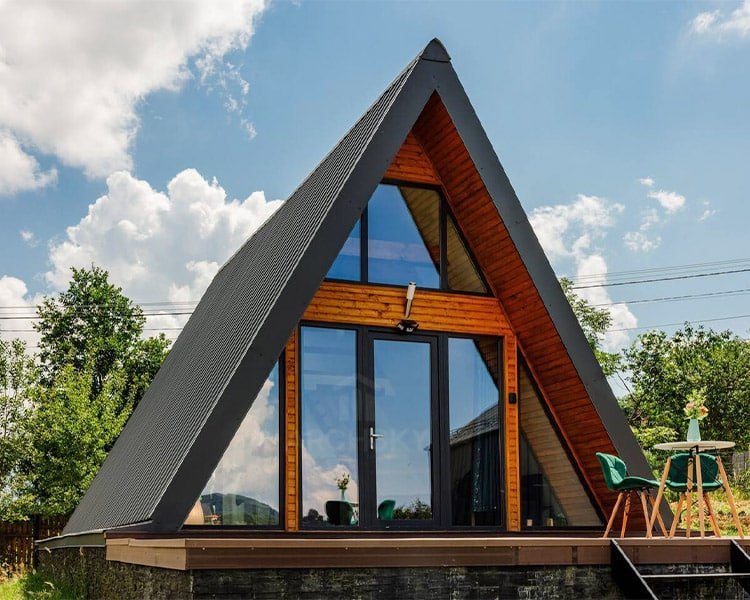
When deciding between prefab homes and modular homes, one of the key factors to consider is the construction process. While both are considered forms of off-site construction, they differ significantly in how they are built and assembled. Understanding these differences can help potential homeowners make more informed decisions about which type of home is best suited to their needs.
Prefab Homes: Pre-Fabricated Panels or Kits
Prefab homes are typically constructed in factory-controlled environments and come in a variety of formats, such as pre-fabricated panels or kits. These homes are built off-site, and the components are then shipped to the construction site for assembly.
Panelized Homes
In the case of panelized prefab homes, individual components such as walls, roofs, and floor sections are pre-built in a factory and then delivered to the site. These panels are assembled on-site, similar to how traditional homes are constructed, but with the advantage of factory precision. The key advantage of panelized homes is flexibility in design; homeowners can often choose the layout and style of the home during the design phase.
Kit Homes
Kit homes are essentially pre-packaged homes, where all the materials and instructions needed for construction are provided in a single kit. Homeowners or contractors are responsible for the assembly, though professional assistance may still be required. Kit homes are an affordable option for those looking to build their own home, but they do require more time and effort than modular homes or panelized prefab homes.
The assembly process for prefab homes can be completed relatively quickly, especially when using materials such as aluminum, which is lightweight and easy to handle. This construction method allows for faster building times and often results in lower overall costs compared to traditional site-built homes.
Modular Homes: Built in Sections or "Modules"
Unlike prefab homes, modular homes are constructed in larger sections or “modules” that are built in a factory before being transported to the site for assembly. These modules are fully constructed, with essential systems such as plumbing, electrical wiring, and insulation installed in the factory.
Modular Construction
The modules are constructed to be transported and connected on-site, making it easy to expand or modify the layout during the design process. Once the modules are delivered to the construction site, they are connected and assembled by professionals to form a single home. The foundation is completed separately, and the modules are placed on top, creating a structurally sound home.
Speed of Construction
While the construction of each module happens off-site, the assembly of the home on-site typically takes less time than traditional construction. The overall speed of construction is further improved by the fact that the modules are being built in parallel with the site preparation, meaning there is little to no downtime. However, the modular construction process tends to take longer than prefab homes that come in pre-fabricated kits or panels, mainly because more on-site work is required.
Advantages of Using Aluminum in Prefab Homes

The materials used in prefab homes play a significant role in determining the overall construction speed, durability, and energy efficiency. Among the various materials used in prefab construction, aluminum has become a highly desirable choice for many homeowners due to its unique benefits.
Speed of Assembly
One of the primary advantages of using aluminum in prefab homes is the speed of assembly. Aluminum is lightweight and easy to handle, which means fewer workers are needed on-site and the construction process can be completed more quickly. In the case of prefab homes, using aluminum components or frames allows for quicker delivery and assembly, reducing the overall build time.
Strength and Durability
Aluminum is an incredibly strong material that can withstand harsh weather conditions, including high winds, heavy rain, and extreme temperatures. It is also highly resistant to corrosion, making it a great choice for homes located in coastal areas or regions with high humidity. When used in prefab homes, aluminum provides an added layer of durability and longevity that is hard to match with traditional building materials.
Resistance to Environmental Factors
Another key advantage of aluminum in prefab homes is its resistance to environmental factors. Unlike wood, which can rot, warp, or attract pests, aluminum does not deteriorate over time. This makes aluminum prefab homes low-maintenance and more resistant to environmental wear and tear. As a result, homeowners can expect a longer lifespan from their aluminum-based prefab homes, with fewer repairs needed.
Energy Efficiency
Aluminum also contributes to the energy efficiency of prefab homes. Due to its thermal conductivity, aluminum can help regulate the temperature inside the home by preventing heat from escaping during the winter and reflecting sunlight in the summer. This leads to lower energy costs for heating and cooling the home, which is particularly beneficial for homeowners looking to reduce their environmental impact.
Comparison of Prefab Homes and Modular Homes in Terms of Construction
The key differences in construction between prefab homes and modular homes lie in the way each is assembled and the materials used. Prefab homes often come as pre-fabricated panels or kits, which allows for greater flexibility and faster assembly. These homes can be customized to fit a variety of design preferences and are typically faster to assemble than modular homes.
On the other hand, modular homes are built in sections and require more time on-site for assembly. While the overall construction time can still be faster than traditional homes, the process of assembling the modules and connecting them requires more labor and preparation. Modular homes often use traditional building materials, such as wood or steel, while prefab homes may incorporate aluminum for its lightweight, durable, and energy-efficient properties.
When considering construction speed, durability, and overall efficiency, prefab homes that use aluminum as a primary material offer several advantages. Aluminum’s strength, resistance to environmental factors, and lightweight nature make it an ideal material for homes that need to be built quickly and last for decades with minimal maintenance.
Design Flexibility and Customization: Aluminum Prefab Homes
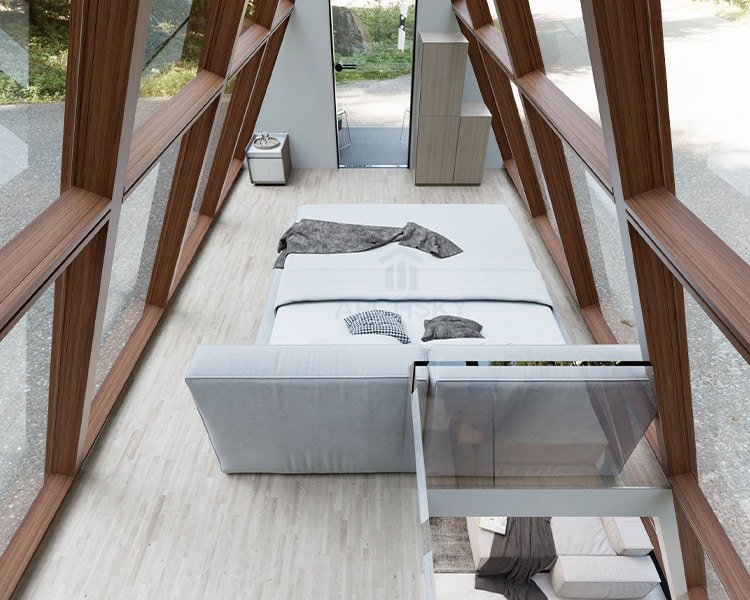
One of the most attractive features of aluminum prefab homes is the exceptional level of design flexibility they offer. Unlike traditional homes, which are often constrained by the limitations of local materials and construction methods, aluminum prefab homes can be customized to meet a wide range of aesthetic and functional preferences. The use of aluminum not only contributes to a modern and sleek look but also enhances the overall adaptability of these homes. In this section, we will explore the design possibilities for aluminum prefab homes, their customizability in layout and finishes, and how they compare with the more rigid design structures found in modular homes.
Modern, Sleek Aesthetics of Aluminum Prefab Homes
The design possibilities for aluminum prefab homes are vast, primarily due to aluminum’s unique properties. The lightweight and durable nature of aluminum allows for bold, contemporary designs that are both visually striking and structurally sound.
Contemporary Look
Aluminum prefab homes offer a clean, minimalist aesthetic that appeals to modern homeowners. With smooth, sleek lines and a variety of available finishes, aluminum frames can be shaped into various architectural styles, from industrial to ultra-modern designs. The reflective nature of aluminum adds a touch of elegance while contributing to the home’s overall energy efficiency by reducing heat absorption.
Customization Options
Aluminum prefab homes are highly customizable, allowing for the creation of open-plan layouts, large windows, and expansive indoor-outdoor living spaces. The flexibility of aluminum in design means homeowners can create a home that suits their specific needs—whether it’s maximizing natural light, integrating unique architectural features, or choosing custom finishes.
Durability with Style
Aluminum’s strength and resistance to weathering make it an ideal material for creating sleek, stylish homes that stand the test of time. Its inherent properties make aluminum prefab homes not only attractive but also capable of enduring harsh environmental conditions without deteriorating, offering both beauty and longevity.
Customizing Aluminum Prefab Homes: Layout, Finishes, and Energy Efficiency
One of the primary advantages of aluminum prefab homes is the high degree of customization they allow in terms of layout, finishes, and energy-efficient features. This flexibility helps homeowners create a home that fits their specific lifestyle and environmental goals.

Flexible Layouts
Unlike traditional stick-built homes, aluminum prefab homes allow for customizable floor plans. Whether you prefer an open-concept living area, separate rooms for privacy, or a flexible multi-use space, aluminum can easily accommodate diverse design ideas. The lightweight nature of the material allows for larger open spaces with fewer structural supports, providing more freedom in layout design.
Finishes and Interior Design
Aluminum prefab homes can feature a wide range of finishes, both on the exterior and interior. Aluminum’s modern look can be complemented with materials such as wood, glass, or concrete, allowing for personalized finishes that suit your aesthetic preferences. Interior spaces can be tailored with the latest in sustainable materials, smart home technology, and energy-efficient systems, making aluminum prefab homes a future-proof choice for homeowners looking to minimize their environmental footprint.
Energy Efficiency
Aluminum is highly energy-efficient, and this characteristic can be maximized when used in prefab homes. Aluminum prefab homes often come with high-performance insulation and advanced window systems that reduce energy consumption. Custom features, such as solar panels or energy-efficient HVAC systems, can also be integrated into the design, reducing overall heating and cooling costs. Homeowners can optimize their home’s energy performance while maintaining a sleek, modern aesthetic.
Pros and Cons: Aluminum Prefab Homes vs. Modular Homes
When choosing between aluminum prefab homes and modular homes, it’s essential to understand the unique advantages and drawbacks of each. Both options offer distinct benefits in terms of construction, durability, and customization, but they also come with trade-offs. In this article, we will explore the pros and cons of both to help you make an informed decision.
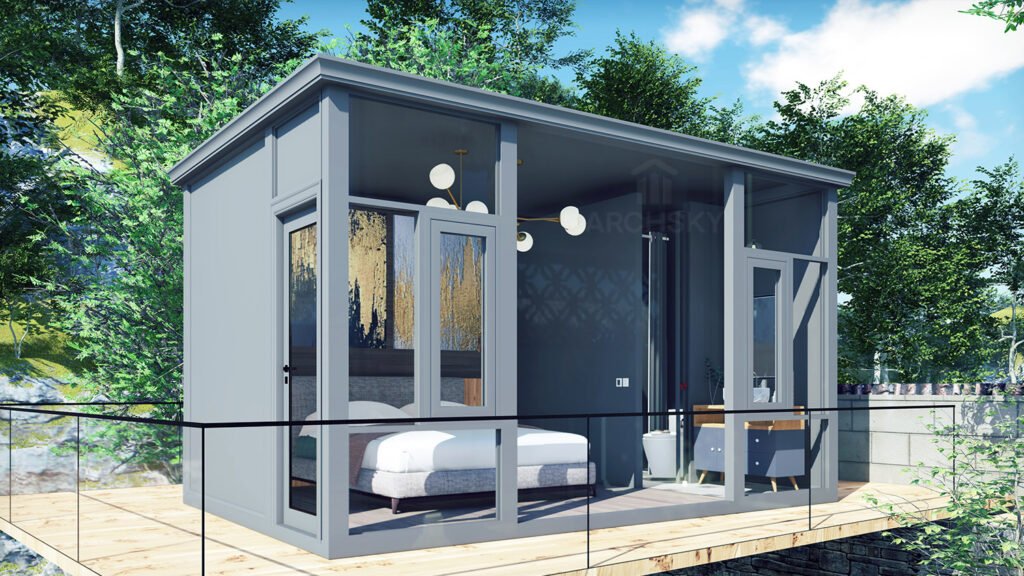
Pros of Aluminum Prefab Homes
1. Durability and Weather Resistance
Aluminum prefab homes are known for their superior durability. The material is naturally resistant to rust, corrosion, and other common environmental wear and tear. This makes aluminum prefab homes an excellent choice in regions that experience harsh weather conditions, such as heavy rainfall, high winds, or extreme heat. Aluminum’s inherent strength also makes these homes resilient against pests, ensuring a longer lifespan compared to traditional wood-framed houses.
2. Modern Design and Aesthetic Appeal
One of the standout features of aluminum prefab homes is their sleek, modern design. These homes often incorporate minimalist, contemporary styles that appeal to those looking for a more stylish, cutting-edge living space. Aluminum’s versatile nature allows for clean lines, open spaces, and expansive windows, making it an ideal material for anyone wanting a modern aesthetic.
3. Lower Maintenance
Compared to traditional housing materials, aluminum requires significantly less maintenance. Unlike wood, aluminum does not need to be repainted regularly, nor is it susceptible to mold or rot. The minimal upkeep required for aluminum prefab homes can save homeowners both time and money over the years. This makes it an attractive option for individuals who want a low-maintenance living solution.
4. Eco-Friendly Construction
Aluminum is a highly recyclable material, making aluminum prefab homes an environmentally friendly choice. The sustainability factor plays an important role for those seeking to minimize their carbon footprint. Moreover, the efficiency of aluminum in reflecting heat can contribute to better energy efficiency in the home, reducing the need for excessive heating or cooling.
5. Ease of Transport
Due to their prefab nature, aluminum homes are designed to be easily transported. Whether you’re moving to a new location or looking for a more flexible housing option, aluminum prefab homes can be disassembled and relocated with relatively little hassle. This mobility provides a significant advantage, especially for individuals who need to move frequently or live in temporary settings.
Cons of Aluminum Prefab Homes
1. Initial Cost
One of the primary drawbacks of aluminum prefab homes is the higher initial cost. Although they offer long-term benefits like lower maintenance, the upfront price can be significantly higher than that of a modular home. The cost is often associated with the materials and the technology required to fabricate these homes to meet modern standards. However, many homeowners find that the long-term savings in maintenance and energy efficiency help offset this higher initial investment.
2. Insulation Concerns
Aluminum, while durable and resistant to external elements, is not the best insulator compared to other materials like wood or concrete. Aluminum prefab homes can suffer from heat transfer issues, making it difficult to maintain comfortable indoor temperatures year-round. This can lead to increased energy costs unless proper insulation systems are incorporated during the construction phase. However, advanced designs and insulation technologies can mitigate these issues effectively, ensuring the home remains energy-efficient.
Pros of Modular Homes
1. Fast Construction Time
One of the biggest advantages of modular homes is their speed of construction. These homes are built in sections at a factory and then assembled on-site. This process significantly reduces construction time, allowing homeowners to move into their new homes much faster than with traditional building methods. For those who need a home built quickly due to job relocations or other time-sensitive needs, modular homes offer a practical solution.
2. Lower Initial Cost
Modular homes are generally more affordable upfront than aluminum prefab homes. The construction process is streamlined, and the homes are often built using standardized plans, which reduces costs. For individuals on a tight budget or those seeking affordable housing options, modular homes present an attractive, cost-effective choice without sacrificing basic functionality or comfort.
3. Customizable Design Options
Although modular homes are typically pre-designed in sections, they still offer a range of customization options. Many manufacturers allow for adjustments to floor plans, room sizes, and finishes, giving homeowners the flexibility to create a home that fits their personal style. This makes modular homes a good option for people who want to personalize their living spaces but don’t require the level of flexibility that custom-built homes offer.
Cons of Modular Homes
1. Limited Design Flexibility
Unlike aluminum prefab homes, which can be fully customized in terms of layout and design, modular homes are constrained by the factory-produced sections they are made from. Although customization is possible within those sections, there is still a limitation on how much you can alter the overall design. This lack of design flexibility may be a dealbreaker for those who want a truly unique home or have specific architectural preferences.
2. Higher Long-Term Maintenance
Modular homes, especially older models, may require more maintenance over time than aluminum prefab homes. Issues like roofing problems, foundation settling, and exterior wear and tear are more common in modular homes due to the way they are constructed. Over the years, this can lead to higher long-term maintenance costs, which may not be the case with aluminum prefab homes that are more durable and low-maintenance.
3. Environmental Impact
While modular homes can be built quickly and affordably, they are often less eco-friendly compared to aluminum prefab homes. The construction materials used in modular homes, particularly those with wood framing, may not be as sustainable as aluminum, which is highly recyclable. Additionally, the manufacturing process of modular homes may result in more waste, impacting their environmental footprint. For eco-conscious buyers, this may be an important factor to consider.
Conclusion
Both prefabricated aluminum homes and modular homes offer practical solutions, each catering to different needs. Aluminum prefab homes are known for their durability, energy efficiency, and modern design flexibility, making them an ideal choice for those seeking a sustainable and low-maintenance home. While they come with a higher initial cost, their long-term benefits—such as reduced energy bills and minimal upkeep—make them a wise investment. On the other hand, modular homes offer a quicker, more affordable option but may require more maintenance over time and offer less design flexibility.
Ultimately, aluminum prefab homes stand out due to their advanced material properties, superior energy efficiency, and longevity. For those who prioritize sustainability, durability, and a low-maintenance lifestyle, aluminum prefab homes provide a more rewarding long-term solution. Considering the full range of benefits, buyers looking for a modern, eco-friendly home should strongly consider aluminum prefab homes as the smarter investment.

